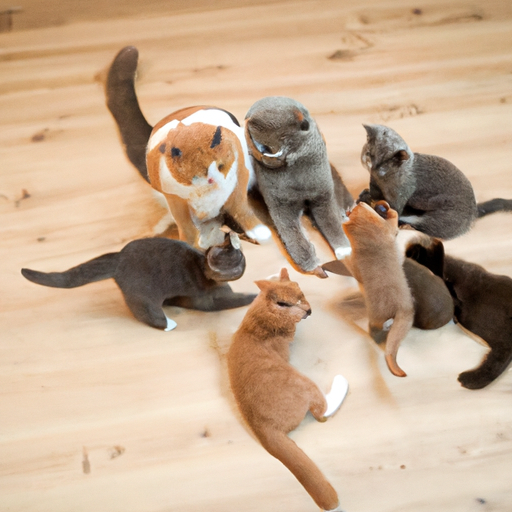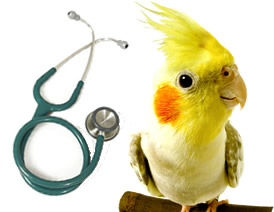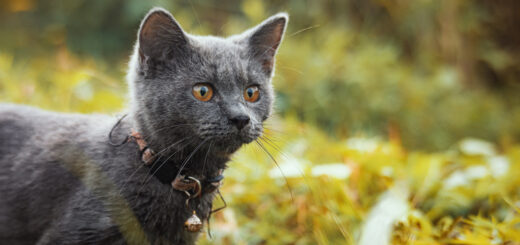Introducing A New Cat To Your Household: Steps For A Smooth Transition
So, you’re getting a new cat? That’s super exciting! But you know what’s really important? Making sure your new cat feels comfortable in their new home! That’s why we’re going to talk about some steps you can take to help your new furry friend have a smooth transition into your household. We’ll cover things like creating a safe space, introducing them to other pets, and giving them lots of love and patience. By following these steps, you’ll be well on your way to having a happy and well-adjusted new cat in your family!
Initial Preparation
Assessing your current pet’s personality and needs
Before bringing a new cat into your household, it’s important to assess the personality and needs of your current pet. Consider their age, temperament, and any specific preferences they may have. Some pets may be more reactive or anxious, while others may be more laid-back. Understanding your pet’s personality will help you make appropriate decisions and adjustments during the introduction process.
Choosing the right time for introduction
Introducing a new cat requires time and patience, so it’s important to choose the right time for this transition. Avoid introducing a new cat during stressful periods, such as moving homes or during loud events. Choose a time when you can devote attention to both your current pet and the new cat, ensuring a smooth and gradual introduction.
Preparing a separate space for the new cat
Creating a separate space for your new cat is vital for a successful introduction. This space should be equipped with all the necessary essentials, such as a bed, litter box, food and water bowls, and toys. It should be a quiet and safe area where the new cat can retreat to when feeling overwhelmed or scared. This separate space allows the new cat to become familiar with the smells and sounds of your home without overwhelming them.
Gathering necessary supplies
Before bringing your new cat home, gather all the necessary supplies. These include litter boxes, litter, food, water bowls, toys, scratching posts, and a carrier for transportation. Having all the supplies ready will ensure a smooth transition and make the new cat feel welcome and comfortable in their new home.
Familiarization Stage
Allowing the new cat to explore their safe space
Once you bring your new cat home, it’s important to allow them to explore their safe space at their own pace. Avoid overwhelming them with too much attention or stimulation, and give them time to adjust to their new surroundings. It’s normal for cats to hide or stay in a safe spot initially, as they need time to feel secure in their new environment.
Exchanging scents between the new cat and other pets
Exchange scents between the new cat and your current pet by swapping bedding or using a cloth to rub on one cat and placing it with the other. This helps familiarize the cats with each other’s scents before they even meet face-to-face. It can decrease initial tension and make the introduction process smoother.
Using positive reinforcement techniques
Using positive reinforcement techniques such as treats, toys, and praise can help create positive associations for both your current pet and the new cat. Rewarding good behavior and calm interactions will encourage friendly behavior and create a harmonious environment.
Gradual introductions through closed doors
During the familiarization stage, it’s recommended to start with gradual introductions through closed doors. This allows the cats to see and smell each other without any direct contact. Use gates or cracked doors to create a visual and olfactory barrier between them. This gradual exposure helps both cats become familiar with each other’s presence before progressing to supervised interactions.

This image is property of images.pexels.com.
Supervised Interactions
First face-to-face meeting with controlled environment
Once the cats have become accustomed to each other’s scents through the closed door introductions, it’s time for their first face-to-face meeting. This initial interaction should take place in a controlled environment, such as a neutral room or a room where both cats have spent limited time. Remove any potential hiding spots and ensure the room is free of any objects that may provoke aggression.
Monitoring body language and behavior
During the supervised interactions, it’s crucial to closely monitor both cats’ body language and behavior. Signs of aggression, such as hissing, growling, raised fur, or swatting, should be addressed immediately by separating the cats and giving them time to calm down. Positive signs, such as relaxed postures, purring, and gentle curiosity, indicate that the cats are getting along well.
Preventing any aggressive incidents
To prevent aggressive incidents, it’s important to intervene if any signs of aggression occur. By redirecting their attention with toys or treats, you can create a positive distraction and diffuse any potential conflict. Always prioritize the safety and well-being of both cats during supervised interactions.
Rewarding calm and friendly interactions
Rewarding calm and friendly interactions between the cats is essential for building positive associations. Offer treats or praise when they engage in calm behavior or exhibit signs of friendly interaction, such as sniffing each other or grooming one another. Reinforcing these positive behaviors helps create a bond between the cats and encourages a harmonious relationship.
Gradual Integration
Increasing supervised interaction time
As the cats demonstrate more positive interactions during supervised sessions, gradually increase the duration of these interactions. Monitor their behavior closely, ensuring that they continue to interact in a calm and friendly manner. If any signs of tension or aggression arise, separate the cats and give them more time to familiarize themselves with each other before increasing the interaction time again.
Rotating access to different areas of the house
To facilitate gradual integration, rotate the cats’ access to different areas of the house. This allows each cat to explore and become familiar with the other’s scent throughout the entire living space. Make sure each cat has their own separate areas as well, including sleeping spots, litter boxes, and food and water bowls.
Feeding the cats in separate but visible locations
To prevent food-related conflicts, feed the cats in separate but visible locations. This allows them to associate positive experiences, such as eating, with each other’s presence. Gradually move the food bowls closer over time, while monitoring their behavior during meal times. This helps normalize their coexistence and minimizes any potential competition for resources.
Providing individual attention and playtime
During the gradual integration process, it’s important to provide individual attention and playtime for both cats. This ensures that they each receive the mental and physical stimulation they need. Play with interactive toys and engage them in activities that cater to their individual preferences. Spending quality time with each cat helps establish a bond and reduces the chances of attention-seeking behaviors.

This image is property of images.pexels.com.
Ensuring Safety and Comfort
Providing plenty of vertical space and hiding spots
To ensure the safety and comfort of both cats, provide plenty of vertical space and hiding spots throughout your home. This allows them to escape from potential stressors or conflicts and provides a sense of security. Install cat trees, shelves, and perches where they can climb and observe their surroundings. Additionally, provide cozy hiding spots, such as covered beds or cat condos.
Avoiding territorial disputes through multiple resources
To prevent territorial disputes, provide multiple resources for each cat. This includes separate litter boxes, food and water bowls, and scratching posts. Each cat should have easy access to these resources without feeling threatened or having to compete. By ensuring an abundance of resources, you minimize the possibility of conflicts arising from territorial behavior.
Implementing a gradual feeding schedule
Implementing a gradual feeding schedule can help reduce potential feeding-related conflicts. Establish consistent feeding times for each cat and ensure they are fed separately. This prevents one cat from feeling threatened or attempting to steal the other’s food. Gradually synchronize their feeding schedules over time, while monitoring their behavior during meal times.
Ensuring proper litter box management
Proper litter box management is crucial for maintaining a harmonious environment. Provide each cat with their own litter box, ideally in separate areas of the house. Regularly clean the litter boxes and ensure they are easily accessible and in quiet locations. Cats are naturally clean animals, and having clean litter boxes is essential for their comfort and satisfaction.
Addressing Challenges
Handling conflicts and aggression
Conflicts and aggression can sometimes occur during the integration process. If conflicts arise, separate the cats immediately and give them time to calm down. Assess the triggers for the conflicts and address any underlying issues. In some cases, seeking professional advice from a veterinarian or animal behaviorist may be necessary to manage and resolve conflict-related challenges.
Seeking professional advice when needed
If you encounter difficulties during the introduction process or notice persistent signs of aggression or stress, don’t hesitate to seek professional advice. Veterinary behaviorists or certified animal behavior consultants can provide expert guidance tailored to your specific situation. They can assess the cats’ behavior, recommend appropriate interventions, and help you create a harmonious environment for all pets involved.
Dealing with jealousy and attention-seeking behaviors
Jealousy and attention-seeking behaviors may arise when a new cat joins the household. Ensure that you continue to spend quality time with your current pet and provide reassurance and affection. Engage in activities that your pet enjoys and maintain your routines as much as possible. This helps alleviate any feelings of jealousy or insecurity and reaffirms their place in your heart and home.
Respecting each pet’s individual needs
Throughout the integration process, it’s important to respect each pet’s individual needs. Cats have different personalities and may require different levels of social interaction or personal space. Observe their preferences and adjust your approach accordingly. By understanding and respecting each pet’s needs, you can create a harmonious environment where all cats feel safe, secure, and loved.

This image is property of images.pexels.com.
Monitoring and Patience
Remaining vigilant during the adjustment period
During the adjustment period, it’s essential to remain vigilant and observe the cats’ behavior. Changes in body language, eating habits, or litter box usage may indicate stress or potential problems. Monitor their interactions regularly and address any concerning signs promptly. Being attentive and proactive helps ensure the well-being of all pets involved.
Progressively increasing unsupervised time together
As the cats demonstrate positive interactions and comfort with each other, gradually increase the unsupervised time they spend together. Start with short periods and progressively lengthen the time based on their behavior and interactions. This allows them to build trust and familiarity at their own pace, leading to a smoother integration process.
Allowing each cat to set their own pace
Each cat will have their own unique pace for adjusting to the presence of the other. It’s important to respect this and allow each cat to set their own boundaries and comfort level during the integration process. Pushing them too quickly may cause stress and setbacks. By giving them time and space, you are fostering a positive environment for them to develop a healthy relationship.
Celebrating small victories
During the integration process, it’s essential to celebrate small victories along the way. This can be as simple as witnessing calm interactions or seeing the cats comfortably sharing a space. Praise them, offer treats, and let them know how proud you are of their progress. Celebrating these milestones reinforces positive behavior and encourages further cooperation and bonding.
Maintaining Harmonious Environment
Establishing routines and structure
Establishing routines and structure is essential for maintaining a harmonious environment. Cats thrive with predictability and enjoy consistency in their daily lives. Create a schedule for feeding, playtime, and other activities that align with your pets’ needs. This sense of structure provides stability and reduces potential stressors for all pets in your household.
Avoiding favoritism and maintaining balance
Avoid showing favoritism towards one cat over the other. Equal attention and affection should be provided to all pets to prevent feelings of jealousy or rivalry. Maintain a balance between spending quality time with each cat, offering individual attention, and engaging in shared activities. This promotes a harmonious environment where all pets feel valued and loved.
Providing mental and physical stimulation for all pets
To maintain a harmonious environment, provide mental and physical stimulation for all pets. Engage in interactive play sessions, offer a variety of toys, and rotate enriching activities to keep them mentally engaged. This reduces boredom and potential frustration, making your home a more peaceful and enjoyable place for all pets.
Regular veterinary check-ups for optimal health
Regular veterinary check-ups are crucial for the overall health and well-being of your pets. Schedule routine visits with your veterinarian to ensure all cats are up to date on vaccinations and receive proper preventive care. Regular check-ups also allow your veterinarian to detect any potential health issues or concerns early on, ensuring prompt treatment and optimal health for all pets.

Signs of Successful Integration
Relaxed body language and positive interactions
A successful integration is indicated by relaxed body language and positive interactions between the cats. Look for relaxed postures, such as a loose body, soft eyes, and calm movements. Positive interactions may include sniffing, grooming, or playing together. These signs demonstrate that the cats have established a level of comfort and acceptance with each other.
Shared grooming and sleeping
Shared grooming and sleeping are strong indicators of a harmonious relationship between cats. When cats groom each other, it shows trust and bonding. Similarly, when they sleep in close proximity or share sleeping spots, it signifies a level of comfort and security in each other’s presence. Shared grooming and sleeping are positive signs of a successful integration.
Decreased tension and territorial behaviors
A successful integration is characterized by decreased tension and territorial behaviors. Cats may initially exhibit some level of territorial behavior, but as they become more comfortable with each other, such behaviors should decrease. Signs of decreased tension include reduced hissing, growling, or swatting, as well as a more relaxed and peaceful atmosphere in the household.
Establishment of a hierarchy (if applicable)
In some cases, when multiple cats are introduced, a hierarchy may be established among them. This hierarchy helps maintain order and reduces conflicts. If a hierarchy forms, it should not involve aggressive behavior but rather consist of subtle cues and signals that the cats use to establish their positions within the group. A stable hierarchy indicates successful integration and coexistence.
Conclusion
Introducing a new cat to your household requires careful preparation, patience, and monitoring. By assessing your current pet’s personality, selecting the right time, and creating a separate space for the new cat, you lay the foundation for a smooth transition. Through familiarization, supervised interactions, and gradual integration, both cats can develop a positive relationship. Ensuring safety, addressing challenges, and maintaining a harmonious environment will promote a successful integration. By monitoring the cats’ behavior, remaining patient, and celebrating small victories, you can create a stable and loving home for all pets. Remember, seeking professional advice when needed and providing regular veterinary check-ups are essential for the overall well-being and optimal health of your feline companions. With love, patience, and understanding, you can successfully introduce a new cat to your household and create a harmonious environment where all pets can thrive.









